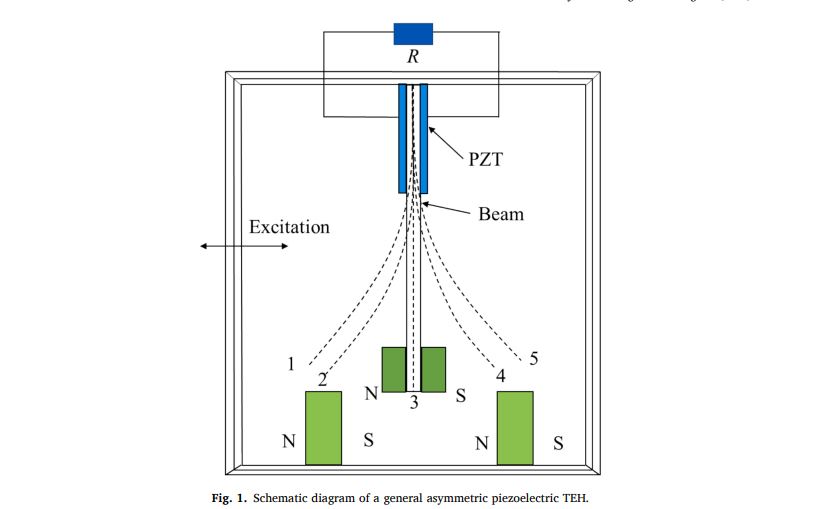Abstract:
Ambient vibration conditions greatly influence the response of nonlinear energy harvesters. Recently, simulations and experiments have verified that tristable energy harvesters have excellent energy harvesting performance and complex nonlinear characteristics, which are important in broadening their effective operating frequency range. The response mechanism of the asymmetric tristable energy harvester is more complex than its symmetric counterpart. Owing to the complexities of the former, streamlined design methodologies and methods remain scarce. To facilitate future innovation and research on asymmetric tristable energy harvesters, this paper examines their nonlinear characteristics and energy harvesting performance. The Melnikov method is employed to predict the occurrence of chaotic motion, which is verified by numerical simulations. The chaotic dynamical system theory provides a simplified analytical framework that provides deeper insights into the performance of the asymmetric tristable energy harvester.
Compared with its symmetric counterpart, the asymmetric tristable energy harvester can more easily jump into the interwell motion and output the higher voltage under low-level excitations

.
Authors:
Xiaoqing Ma, Haitao Li, Shengxi Zhou, Zhichun Yang, Grzegorz Litak
This paper was published in: Mechanical Systems and Signal Processing 168 (2022) 108612
To read full text, please visit publisher site or download pdf file.
This work was funded by the National Natural Science of China (Grant Nos. 12072267, 11972296), the Science, Technology and
Innovation Commission of Shenzhen Municipality (No. JCYJ20190806153615091), the International Science and Technology
Cooperation Project of Guangdong Province (No. 2021A0505030012), the Fundamental Research Funds for the Central Universities
(Granted No. G2021KY0601), and the Aeronautical Science of China (Grant no. 2019ZA027010).